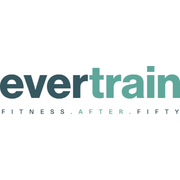Fitness can be both effective and injury free. 🤯 Here’s how we do it.
~5 minute read
There is a big dilemma for people over 50 when it comes to fitness. 😩
We call it the “injuries vs. fitness conundrum”. It’s the idea that you can’t both be injury-free and fit after the age of 50. Through countless bad experiences, fitness failures and long lists of injuries that plague them, the people over 50 that we’ve spoken with often doubt that you can be both at the same time.
When speaking with 50+ people, we’re often asked questions like these:
Can you get fit if you have an ongoing injury?
Will trying to get in shape inevitably get you injured?
Does taking care of my injuries mean I have to put my fitness goals on hold?
Can I achieve both an injury-free body and get fit and lose weight?
We’re big believers that you can address both injuries and fitness at the same time. It does not have to be one or the other. 🥳




